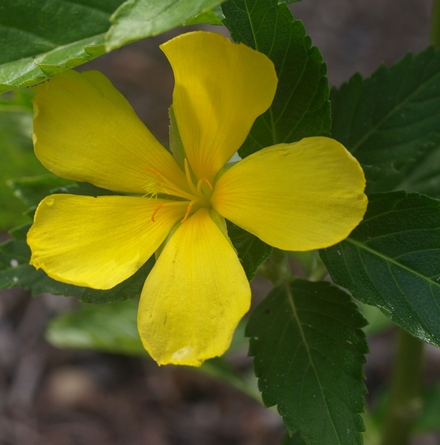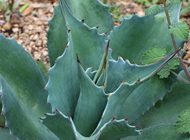 |
Turnera ulmifolia |
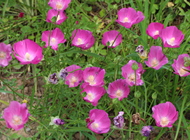 |
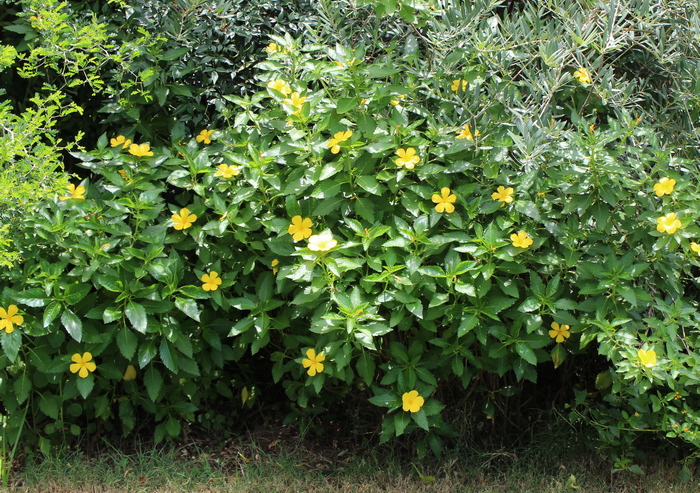
| | Self-sown stand near where the original plant lived |
|
| Common name |
yellow buttercup; yellow alder; sage rose |
| Family |
turneraceae |
| Life cycle |
tender perennial/shrub (Z9-11)  |
| Flowers |
yellow (summer-fall) |
| Size |
24-36" |
| Light |
sun-light shade |
| Cultural notes |
well drained soil, drought-tolerant |
From seed  |
reseeds in our garden
Flowers first year from seed sown indoors early.
|
Two-inch yellow buttercup flowers on a rounded evergreen shrub, open in the morning and close in late afternoon. It's among my favorite border plants in our Texas garden: in bloom through most of the season, not bothered by heat or drought, and looking like a solid deep green mass even when flowers are sparse. The serrated leaves are supposedly fragrant (but I haven't noticed that), and the flowers, which open in the morning and close by late afternoon, attract butterflies and other pollinators. So I'm surprised that it's not more popular around here.
|

| | Flowers close in a spiral fashion late afternoon |
| 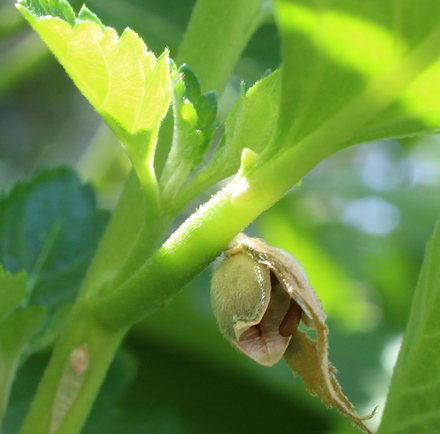
| | Seedpod hidden underneath the leaves |
|
Yellow buttercup is generally hardy in our Gulf Coast garden. The top growth is not freeze-tolerant: even a mild freeze is sufficient to kill the leaves. The winter after we first planted our first plant had a harsh spell into the mid-teens with freezing rain, and our plant did not return that spring – but its seedlings did, emerging in the middle of March and growing to blooming size by mid-summer. The stand was impressively dense by early fall, until a November freeze knocked them back. The two winters since then have been milder overall, though, and the new stand has proved to be root-hardy, returning strongly each spring. For the longest time, I was puzzled by the self-seeding: superficial inspection of blooming plants never revealed anything but flowers and buds, no seeds. It wasn't until I looked more carefully that I spotted the seedpods; even on a profusely blooming plant, there are typically only a few, hidden underneath the leaves, usually empty because they drop their seeds quickly, and the pods themselves drop to the ground shortly afterwards. Once I figured that out, I was able to collect some seed, but most seed is deposited on the ground below – ready to replace the mother plant should another deep freeze come along. Which it did, in February 2021, which again outright killed all plants. This time, volunteer seedlings took a long time to show up, not emerging until late May.
|
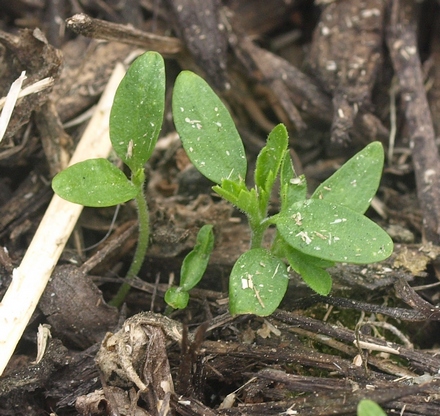
| | Seedlings in mid-March following the winter demise of mother plant |
| 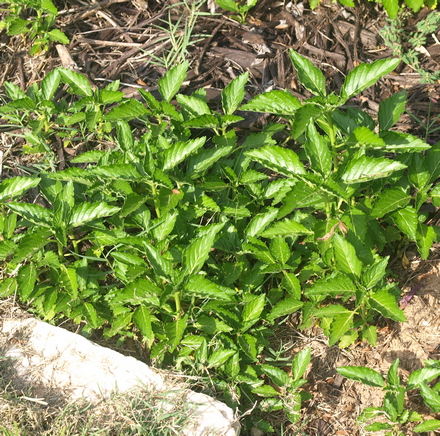
| | Bigger seedlings in early June |
|
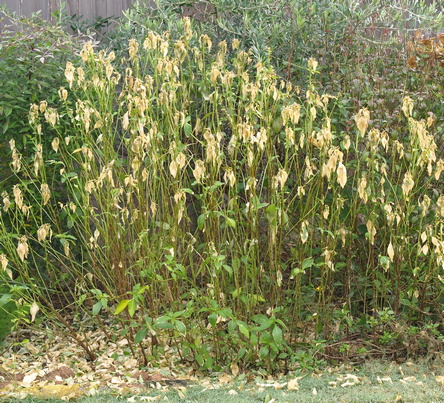
| | Touched by a mild freeze, November 2018 |
|

| | Just planted, early June |
| 
| | Growing nicely, mid-August |
|
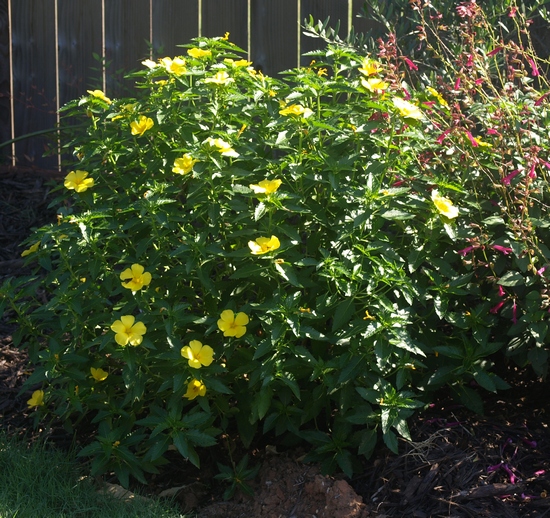
| | In early fall of year one, pairing nicely with the neighboring salvia 'Wendy's Wish' |
|
This plant used to grow in our garden, but it slipped away... About my plant portraits
PlantLinks to other web pages about Turnera ulmifolia
Visitors to this page have left the following comments| NoobGardener69 | May 21, 2021 | How to germinate the seeds? are they needs direct sunlight or hot weather in general? I have tried to sow many of them and none of them are growing
I don't know, unfortunately. I was likewise unsuccessful this year trying to grow them from seed. Luckily I just spotted a few volunteer seedlings in the garden, because the mother plants are definitely dead after our big winter freeze. |
I welcome comments about my web pages; feel free to use the form below to
leave feedback about this particular page. For the benefit of other visitors
to these pages, I will list any relevant comments you leave, and if
appropriate, I will update my page to correct mis-information. Faced with an
ever-increasing onslaught of spam, I'm forced to discard any comments including
html markups. Please submit your comment as plain text. If you have a
comment about the website as a whole, please leave it in my
guestbook. If you
have a question that needs a personal response, please
e-mail me.
Last modified:
June 04, 2021
Contact me
|



